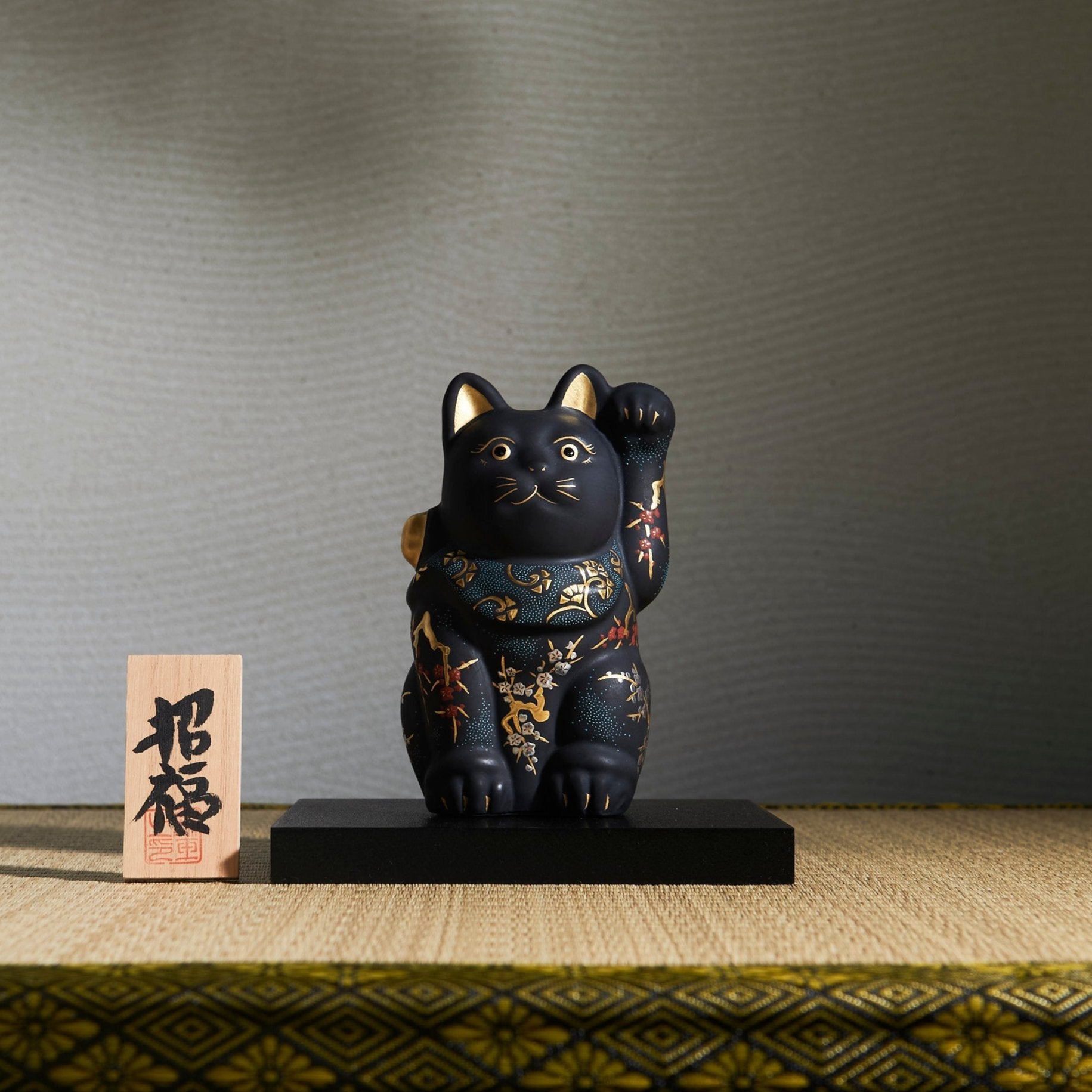

















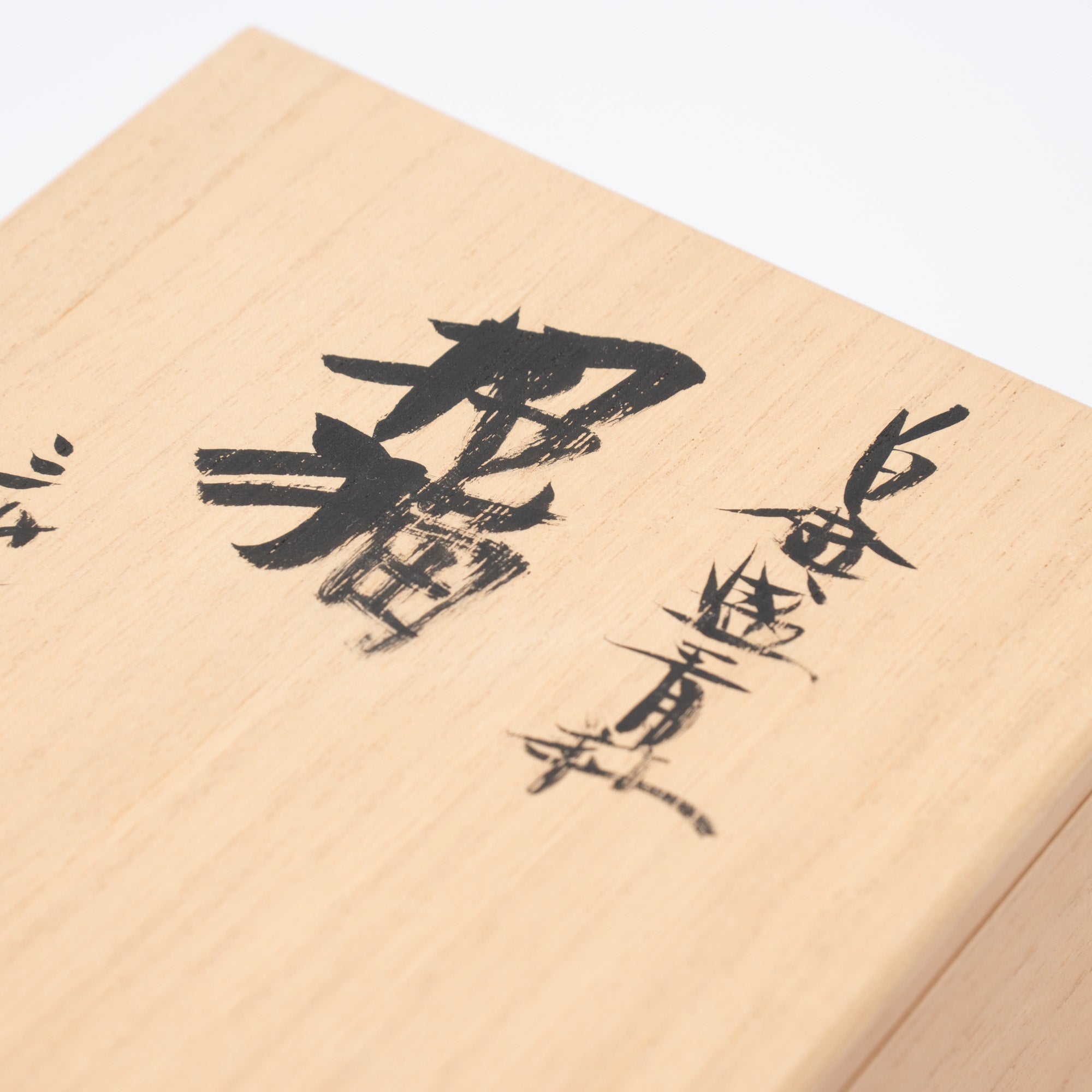
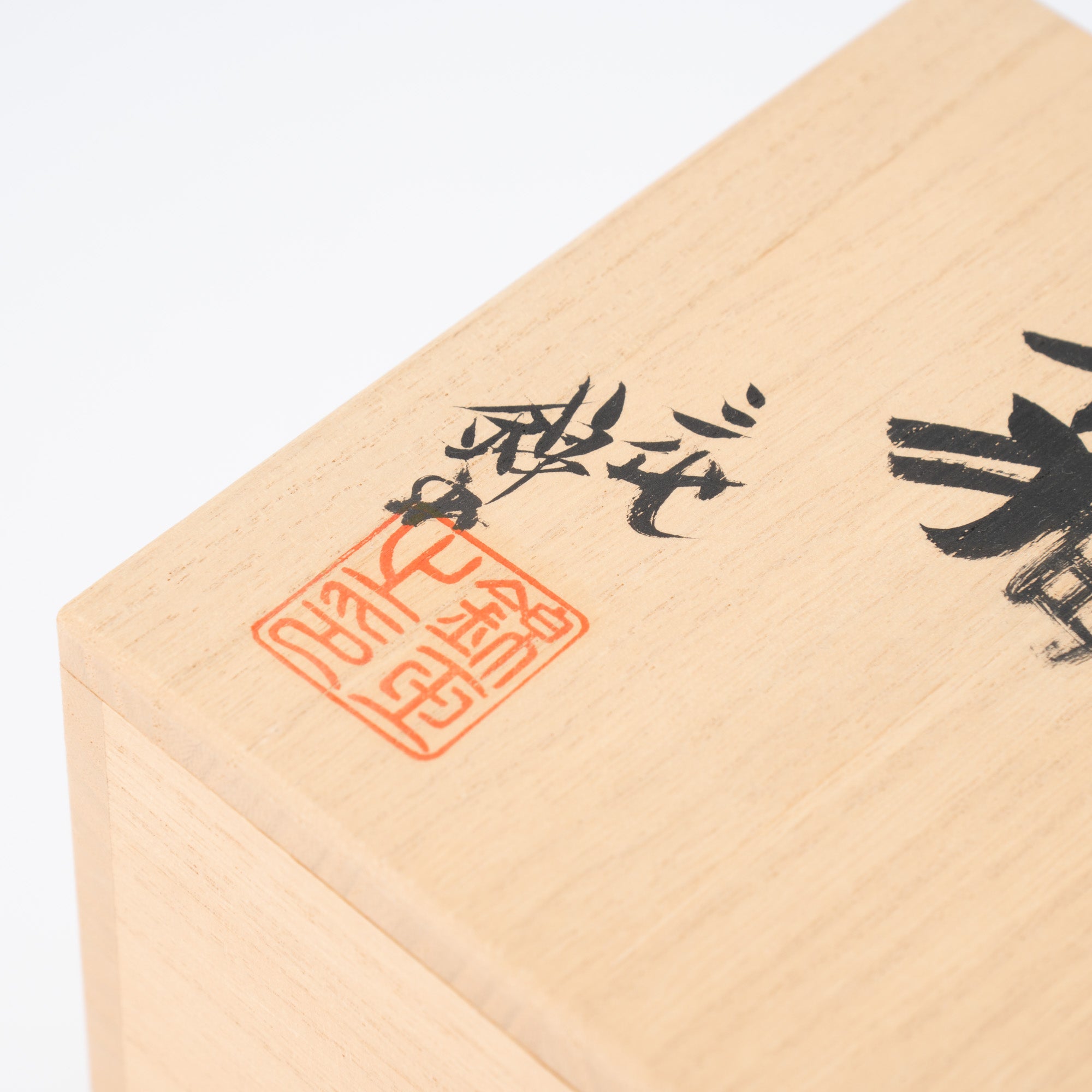
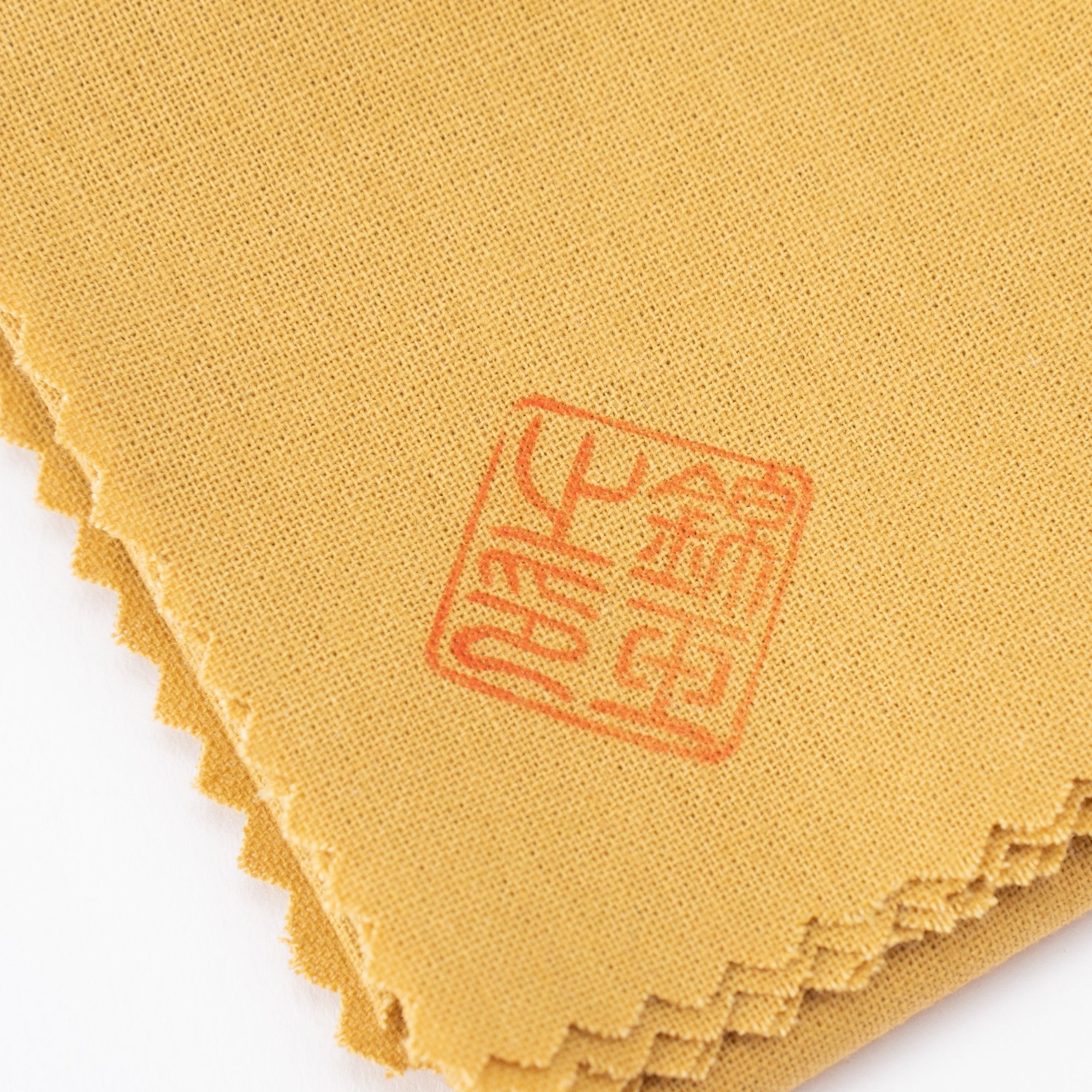
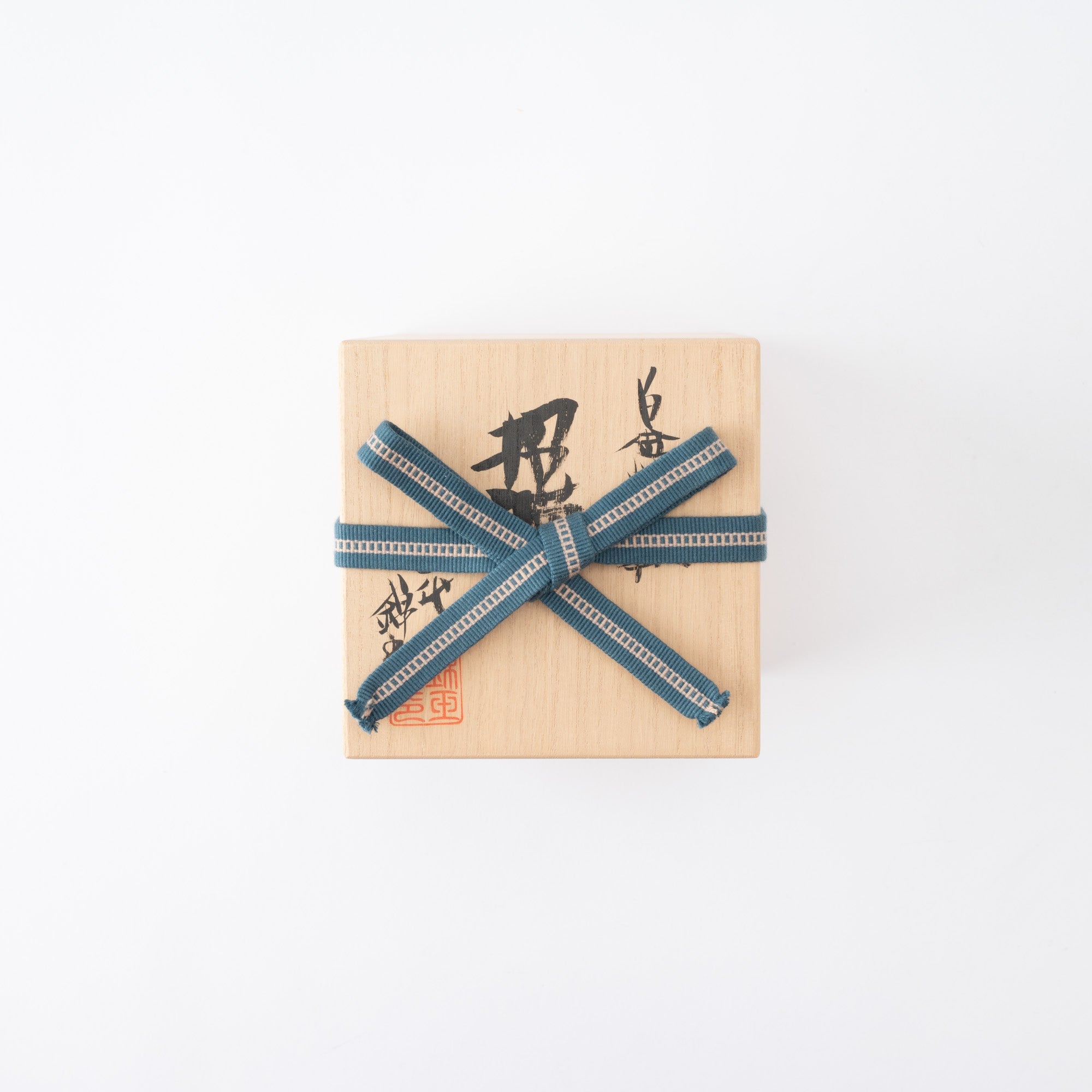
Morikin Aochibu Plum Blossom Pattern Lucky Cat
Estimated Shipping Widget will be displayed here!
The Morikin Aochibu Plum Blossom Pattern Lucky Cat expertly combines the aochibu "blue dots" and morikin "raised gold" techniques. This exquisite piece captivates with its intricate design featuring a black base color that serves as a canvas for the mesmerizing blue dot swirl pattern, applied with perfect precision.
The elegance of this lucky cat ascends further with the classic portrayal of red and white plum blossoms using the morikin technique. The symbolism of the red and white plum blossom motif enriches the auspiciousness of this ornamental piece. Its refined craftsmanship is truly enchanting, exuding an air of sophistication and delicate charm.
Believed to beckon prosperity and invite fortune, this iconic feline serves as a silent herald of business success.
The black maneki neko holds the meaning of warding off evil and misfortune. Influenced by China, maneki neko became popular in Japan starting from the Edo period (1603 CE–1868 CE). In Japan, it was believed that black cats had good night vision and strong spiritual power, so they were regarded as "lucky cats" and considered symbols of protection against evil and good fortune. In Kyoto, they were also seen as symbols of thriving business. The delicate strokes that depict the cute plum blossom pattern and the textured surface make the maneki neko not only exquisite but also more lively and charming.
DETAIL
| Quantity | 1 |
| Size | D 6 cm (2.4 in) x H 12 cm (4.7 in) |
| Material | Porcelain |
| Package Type | Wooden box |
Maker / Brand
Nakada Kingyoku's work embodies Rimpa Artistry with its dignified elegance and graceful beauty. He harmonizes the interplay between space and miniature craftsmanship, combining modern sensibilities with meticulous techniques through the artistry of blue dots and raised gold. His work not only pays homage to his inherited heritage but also introduces innovations to elevate the aochibu style.
Origin
Kutani ware is a pottery produced in the Kaga region of Ishikawa Prefecture and it has a history of over 350 years. It is characterized by the heavy brilliance of the five colors of green, yellow, red, purple, and navy blue that are applied to the bold and daring lines. Its long history has evolved through the tireless efforts and enthusiasm of people who have sought innovation while maintaining tradition.
The beauty of the various styles and methods of painting is known as "Japan Kutani" and is highly regarded around the world.
Choose options






















Estimated Shipping Widget will be displayed here!
Nakada Kingyoku
Nakada Kingyoku's work embodies Rimpa Artistry with its dignified elegance and graceful beauty. He harmonizes the interplay between space and miniature craftsmanship, combining modern sensibilities with meticulous techniques through the artistry of blue dots and raised gold. His work not only pays homage to his inherited heritage but also introduces innovations to elevate the aochibu style.
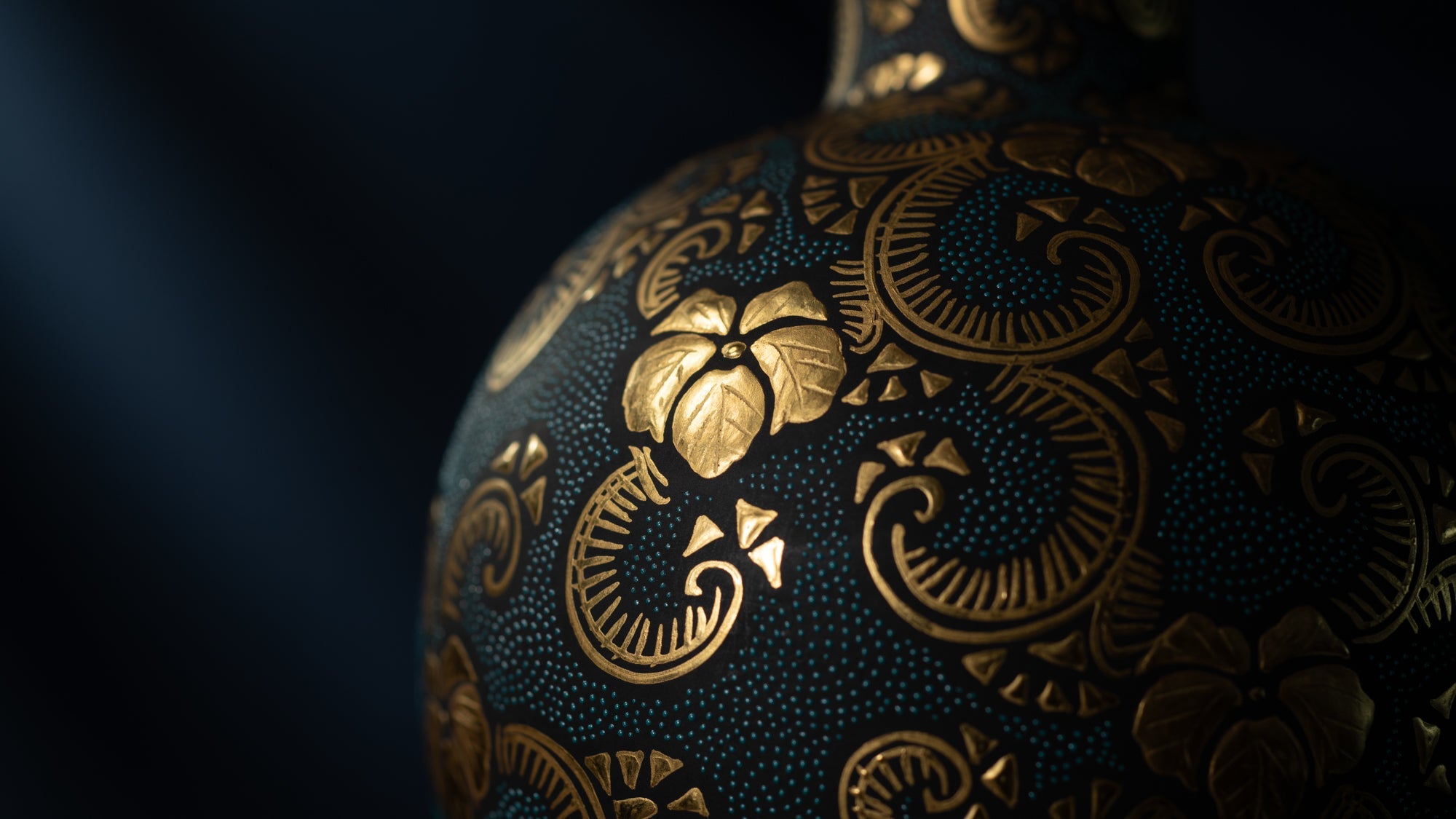
Nakada Kingyoku: The Evolving Legacy of Kutani Ware's Decorative Paintings

Musubi Gallery
Since its inception, MUSUBI KILN has strived to introduce the world to the finest traditional crafts from masters all around Japan.
Here, in the Gallery, we seek to showcase the highest echelon of traditional techniques passed down through generations. You can discover works from masters who have not only perfected those methods, but added their imagination to innovate the craft even further.
Some of these masters have even been named Living National Treasures, a title bestowed upon them by the Japanese government to formally recognize their contribution to crafts and culture — thereby cementing their legacy and making them an important part of art history.
Each piece is meticulously handcrafted over many months to create a timeless treasure that's unlike any other. And when it's in your home, you, too, will become part of that history.
Welcome to the Gallery. Please, peruse at your leisure.
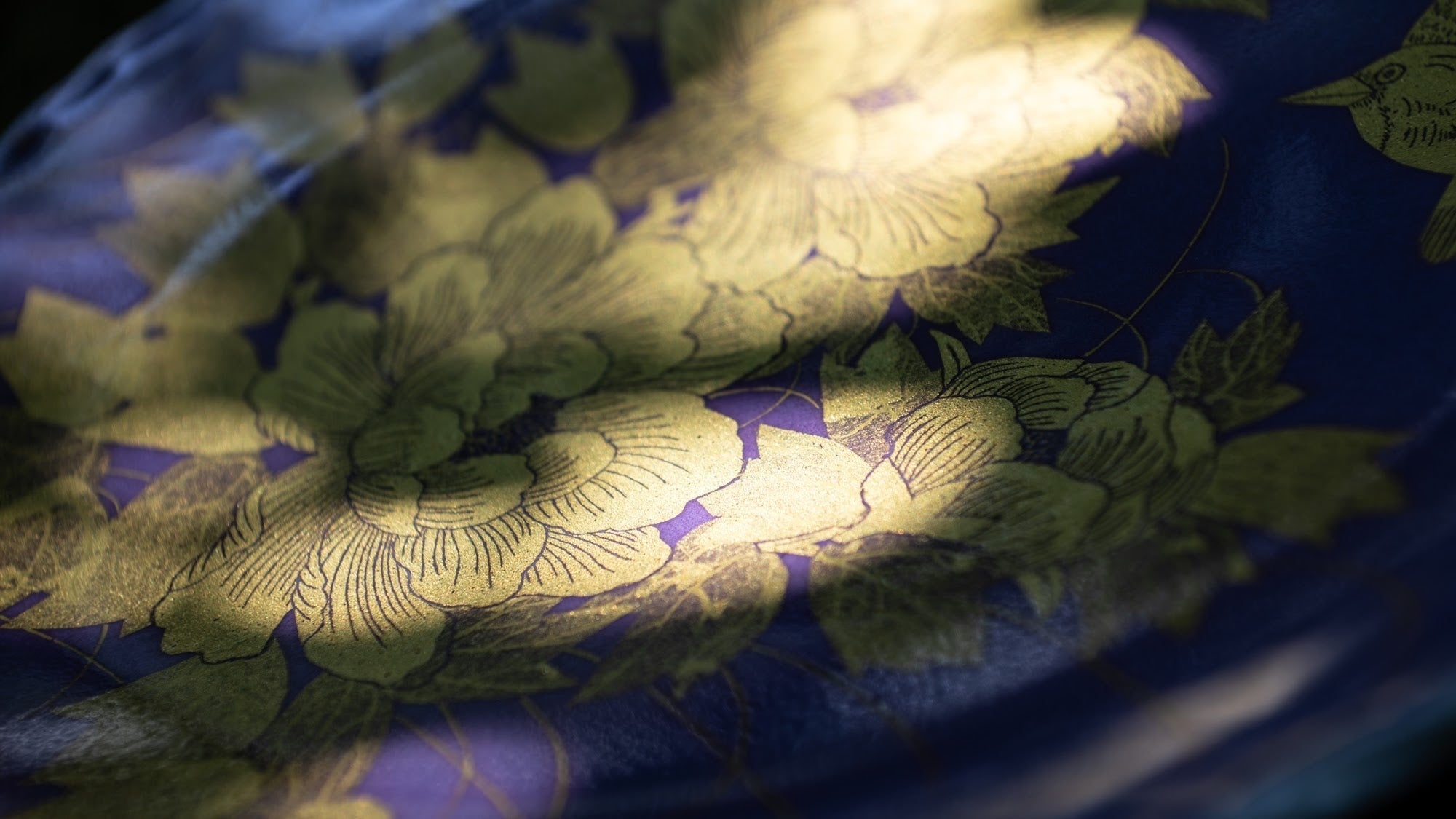
International Shipping
Multiple shipping options available, with discounted shipping for orders over 500000 and free shipping over 5000000.
Insured shipping service
Full compensation for any accidental damage that may occur during transit.
Made by Japanese craftsmen
Fair prices plus free furoshiki wrapping with every order.

